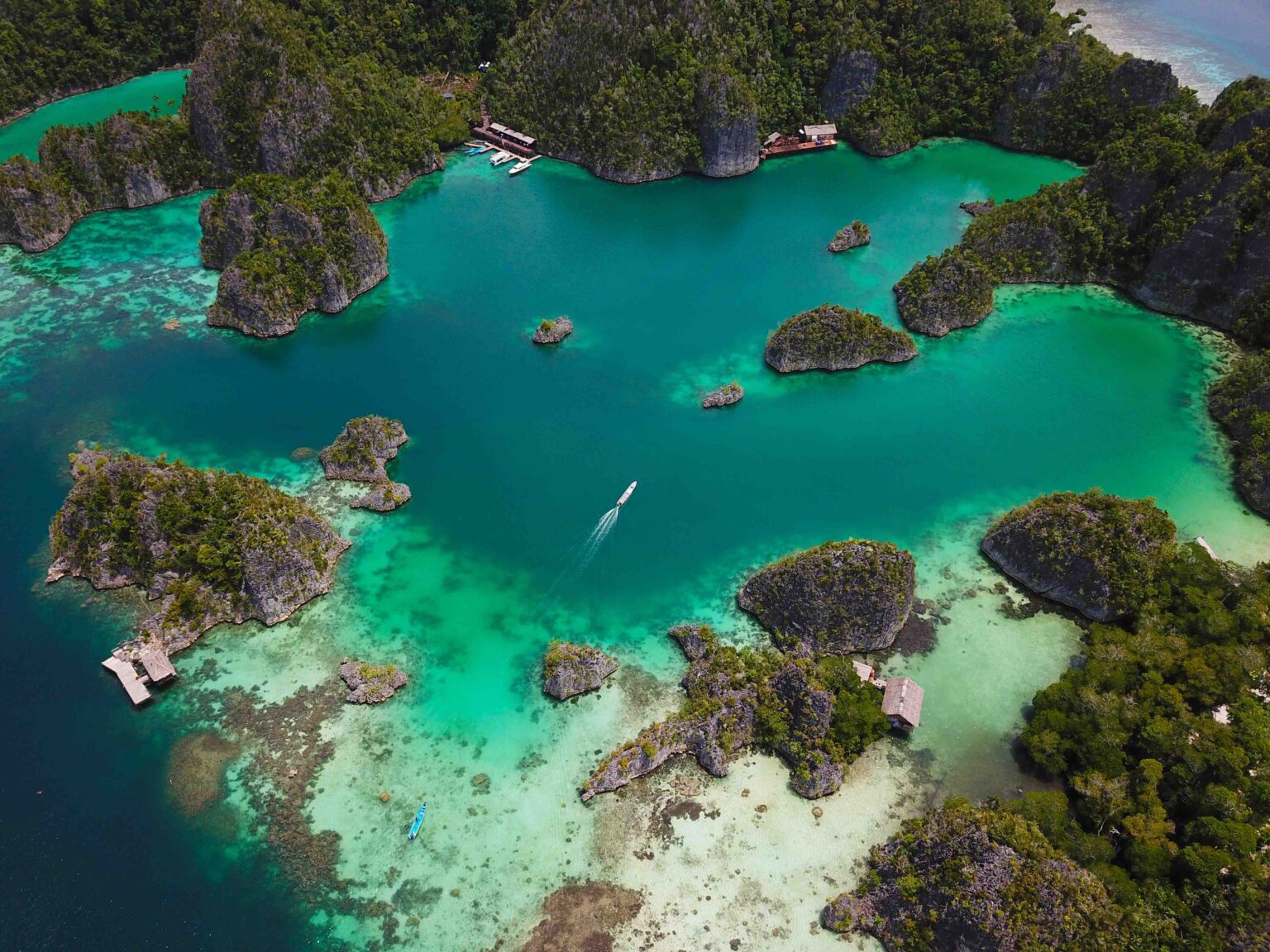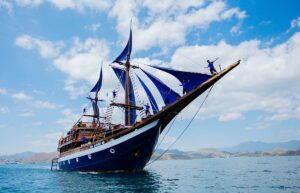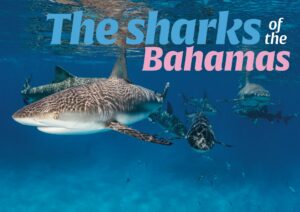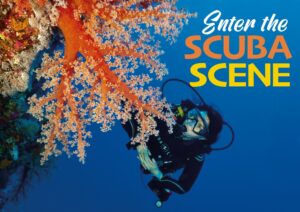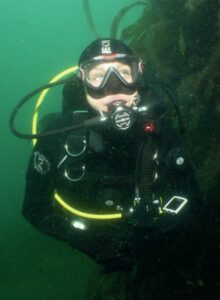The Limestone in the Raja Ampat Archipelago
When visiting Raja Ampat, one of the most awe-inspiring moments is when you first encounter the limestone cliffs along the coastline. These towering structures stretch high into the air and deep into the depths of the water forming the base of the reef systems the area is so well known for.
The history of Raja Ampat goes back millions of years, and many believe that the earliest archipelagos were formed as far back as 420 million years ago and, with time, grew into the incredible structures you find all over the area now.
The four main regions of Raja Ampat, Waigeo, Misool, Salawati, and Bantanta form the geopark area. An initiative to preserve this natural beauty for the local community and tourists.
The largest of these structures can be found on Waigeo, where the mountains reach 900m above sea level.
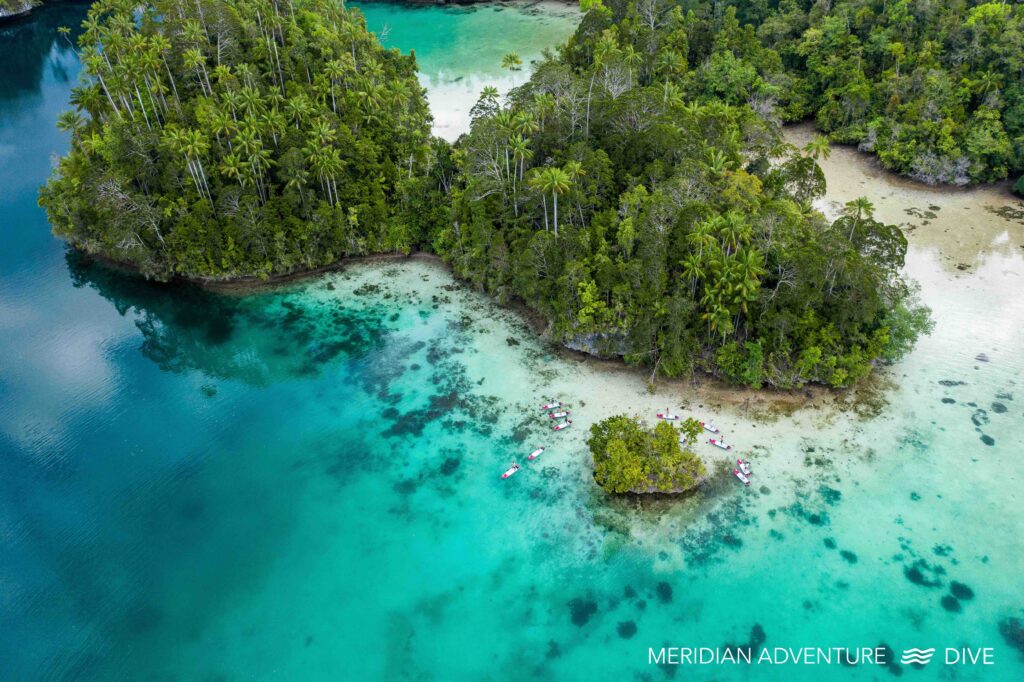
These limestone formations are rich with foliage; green trees and shrubs grow on the small pinnacles and high mountains that rise out of the ocean and provide a natural habitat for a plethora of wildlife. From the birds of paradise to the world-famous coconut crabs.
These islands and pinnacles are spread all over the region. As you travel around the area by boat, you will often pass through channels and passages where the limestone formations tower over you on both sides. The Passage is the most famous natural saltwater river that flows between landmasses in the Western parts of Waigeo.
These limestone formations also offer incredible viewing points for visitors to enjoy Piaynemo and Wayag are the most famous of these and allow guests to enjoy incredible vistas of natural lagoons, valleys, and passages after a short hike on the wooden walkways to the top. The perfect spot to take that Raja Ampat ‘selfie'. While these are the most famous, there are many less known lookouts to explore, such as Pencil rock in the Waigeo region. Book a fast boat tour to explore all these on a non-diving day, or incorporate it into your surface interval.
While the limestone formations are truly impressive from the underwater surface, they become even more spectacular. This is because the structures stretch far below the surface and for the perfect base for hard and soft coral growth that Raja Ampat is famous for. These structures have been eroded over the years due to the tides and currents and now offer some of the best naturally formed structures for divers to explore.
Raja Ampat has everything from natural caverns and swim-throughs to colourful reef slopes and walls. Some of our personal favourites include Red Rock in the northern part of Waigeo. A large island with towering limestone formations, small enclaves with white sandy beaches and palm trees, and a 30m wall on the south side of the island with some of the most colourful coral formations you will ever see. When starting your dive, you will be in awe of the massive structure above the water and gently drift along the wall until, gradually, the wall slopes up, and you end your dive at the foot of a white sandy beach. A memory you will never forget.
Other incredible dives you need to experience are the limestone structures like Mike's Point, Friwen Wall, and the Passage.
Raja Ampat is a truly unique destination with such a long history and has remained mostly untouched over the years. The Last Paradise. This is the closest we can see the earth as it should be in its natural state.
About Meridian Adventure Dive
Situated in Raja Ampat, Indonesia, Meridian Adventure Dive is a PADI 5 Star Resort and winner of the PADI Green Star award. Scuba divers enjoy our professional services that have become synonymous with both the PADI and Meridian Adventure names.
